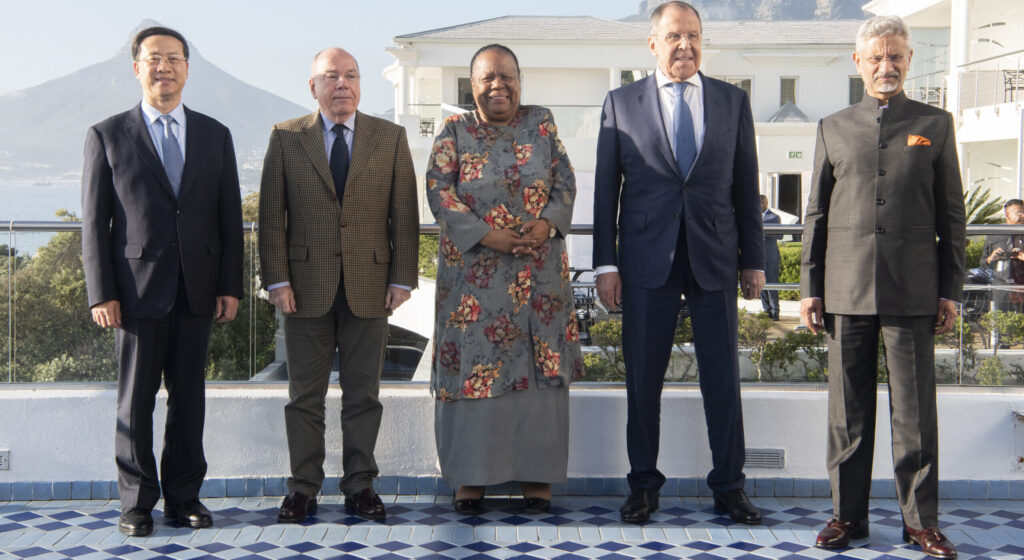

Analysis
18:00
Competing powers are inching closer to a rival monetary union
by Philip Pilkington

Representatives from China, Brazil, South Africa, Russia and India in Cape Town on Thursday. Credit: Getty
As a meeting of foreign ministers from the BRICS (Brazil, Russia, India, China and South Africa) countries takes place in Cape Town ahead of the 15th annual BRICS summit, the Western media has focused on a pointless back-and-forth over whether Russian President Vladimir Putin will be arrested when he attends the latter event. He won’t be, and now journalists are ignoring changes taking place that could prove historic.
The foreign ministers currently visiting South Africa have been dropping hints as to what will be discussed this August. Indian Minister of External Affairs Subrahmanyam Jaishankar laid out the general theme when he stated that the gathering must “send out a strong message that the world is multipolar, that it is rebalancing and that old ways cannot address new situations”.
The BRICS alliance has long been about how best to help its member states grow and develop. Until now, this development has been assumed to be driven by the Western powers, with the BRICS countries riding on their coattails. But as Jaishankar’s statement makes clear, this is no longer the case. The BRICS states are increasingly intent on finding their own voice and cutting their own path — and, with a rapidly expanding membership, there is every reason to think that they might succeed in this regard.
One way these countries could chart a new course is through the introduction of a BRICS currency that might partly replace the US dollar. Some have compared it to when the euro started to be discussed in Europe.
It is hard to assess the viability of an alternative currency without knowing vaguely what it might look like. But foreign ministers have already started dropping hints in this direction. Reports from South Africa suggest that the plan might be to centre the currency on the New Development Bank (NDB), which would act as a clearing house. This seems to suggest that the NDB would become the BRICS equivalent of the IMF.
The Russian Finance Minister, Anton Siluanov, offered more clues. He said that rather than thinking of it as an alternative currency, he “would probably call it a payment unit inside the BRICS countries”. If he is to be believed, then the BRICS currency will initially settle trade between BRICS countries. This could, in theory, create the conditions for firmer monetary relations between the member states — some sort of peg, for example, like the pre-euro European Exchange Rate Mechanism — to grow organically.
Since the NDB looks like it will be the focal point of the currency, it is worth considering the nature and history of the institution. The bank was conceived in 2012 at the fourth BRICS summit, agreed to at the sixth summit in 2014, and its first president was appointed in 2015. The bank was initially set up to help countries with access to development funds, making it look more like an alternative World Bank than an alternative IMF. However, recent plans suggest that it may end up playing both roles at once.
Crucially the headquarters of the bank is in Shanghai — with a rotating presidency. While those who claim that the true aim of the BRICS currency programme is a quasi-imperialist Chinese project for yuan dominance are misguided, the fact that the bank is headquartered in Shanghai speaks volumes. The Chinese clearly see themselves as leading the multipolar revolution in world affairs, and without their economic muscle it is unlikely it would have ever taken place. Those old Leftist dreams of a revolution that gave rise to a socialist power bloc in the Global South never materialised.
What we may be seeing emerge, however, is a largely technocratic trading and economic bloc modelled on the post-1945 Bretton Woods system that would signal the start of a new epoch. Putin’s upcoming appearance should be the least of our concerns.



